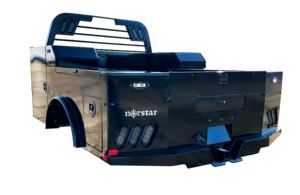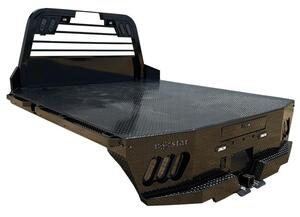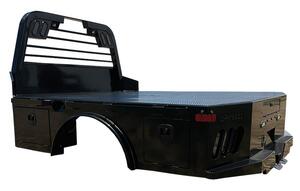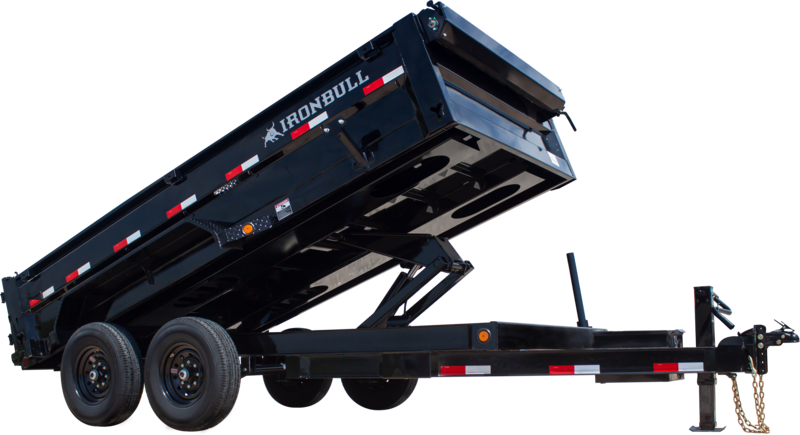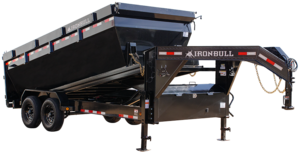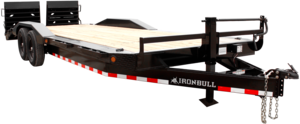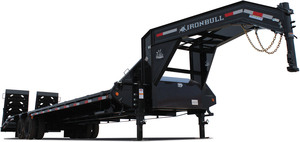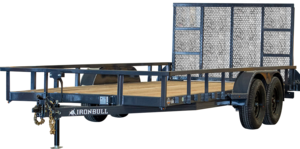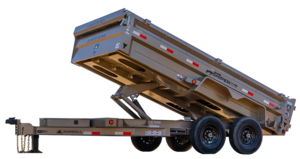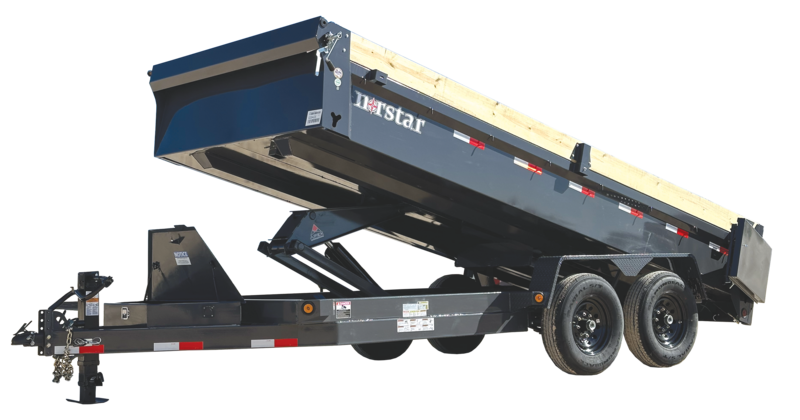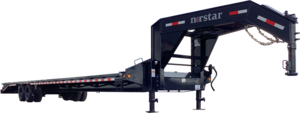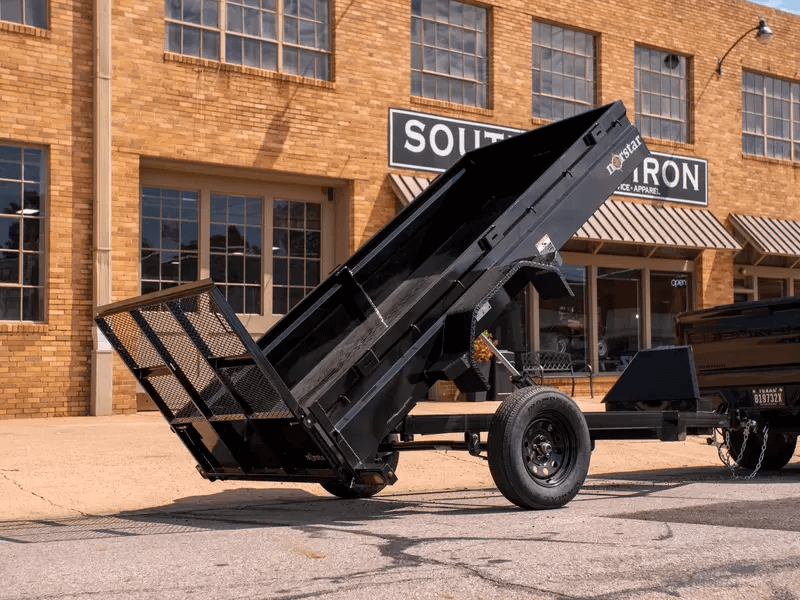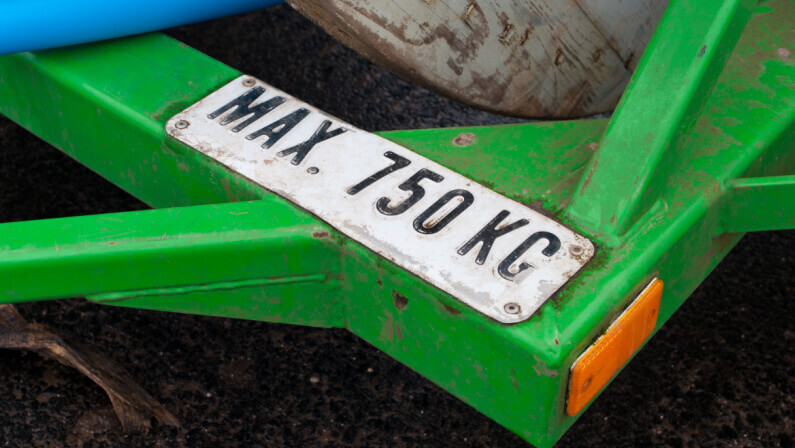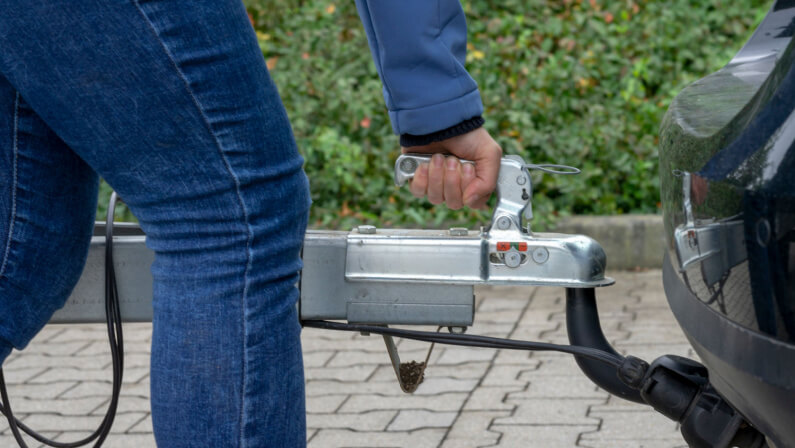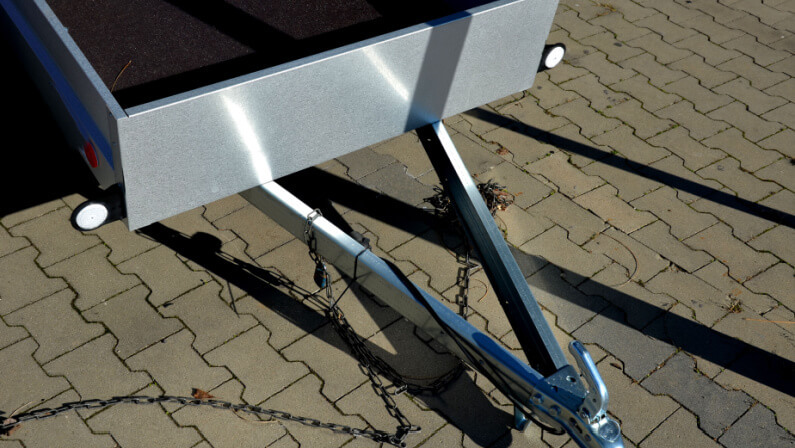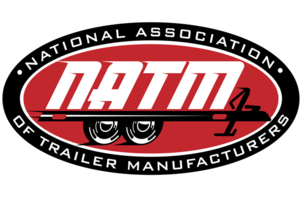How To Load A Trailer: A Comprehensive Guide
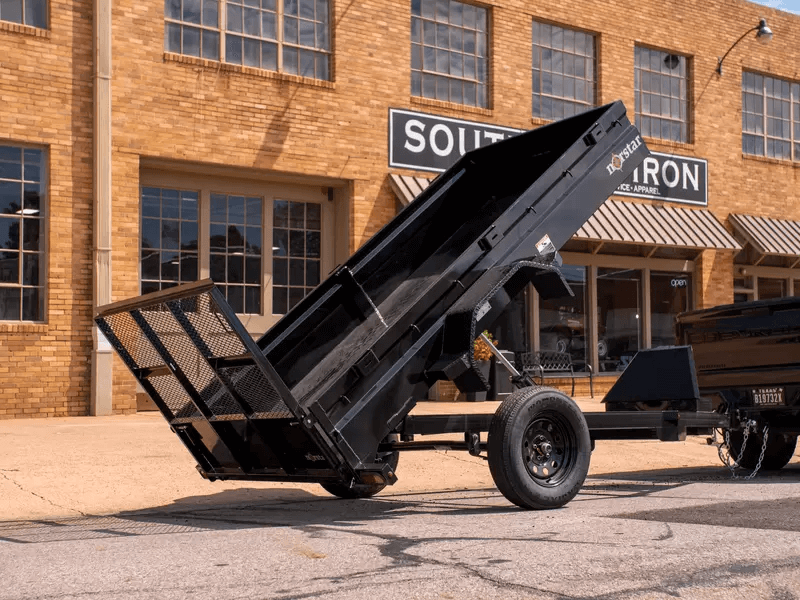
Whether you're moving, hauling equipment, or transporting goods, knowing how to properly load a trailer is crucial for safety and efficiency. A well-loaded trailer ensures stability on the road, prevents damage to your cargo, and protects you and other drivers. With Norstar Trailers' expertise, let's navigate the intricacies of loading trailers properly for a smooth journey ahead.
Why is Proper Trailer Loading Important?
Loading a trailer correctly goes far beyond simple organization. It's a critical practice that affects the safety and handling of both the trailer and the towing vehicle. When cargo is not properly placed and secured, it can cause the trailer to sway back and forth, making it difficult to control, especially at higher speeds or in windy conditions. Such swaying can put other road users at risk and increase the likelihood of an accident.
Improper loading can also result in uneven tire wear or, worse, tire blowouts, which are dangerous and can lead to loss of control. In some cases, incorrect weight distribution can lead to the trailer detaching from the towing vehicle, a situation that poses a significant risk to everyone on the road.
When the weight is not appropriately distributed on a trailer, it can affect the towing vehicle's brakes, making it harder to stop and increasing the stopping distance. It also makes the vehicle less stable when turning, which could lead to the trailer tipping over or veering into other lanes.
While proper loading is crucial for trailer safety, it's equally important to consider other safety measures when transporting certain types of cargo. For instance, when hauling potentially hazardous materials or working in confined spaces like enclosed trailers, using a multi-gas detector can help ensure the safety of workers by monitoring air quality. These devices can detect multiple types of gases simultaneously, providing an extra layer of protection during loading and unloading operations.
What Types of Trailers Require Proper Loading?
Proper loading is a must, no matter what type of trailer you’re using. Here’s a breakdown of various trailers and why they need to be loaded with care:
Single-Axle Utility Trailers: Ideal for personal or light commercial use, these trailers can haul anything from furniture to small equipment. Correct loading here is about avoiding the trailer from tipping or the load from shifting.
Double-Axle Trailers: These are the workhorses for heavier, industrial loads. They can manage more weight, but this also means there's more at stake to keep that weight balanced.
Norstar Utility Dump Trailers: With their robust build, they’re meant for diverse loads like construction materials or heavy tools. The key is to keep the load stable to prevent the trailer from swaying or becoming unmanageable.
Flatbed Trailers: Used for oversized items or machinery, the challenge is in distributing weight across a flat, open space and securing items to prevent them from moving or falling off during transit.
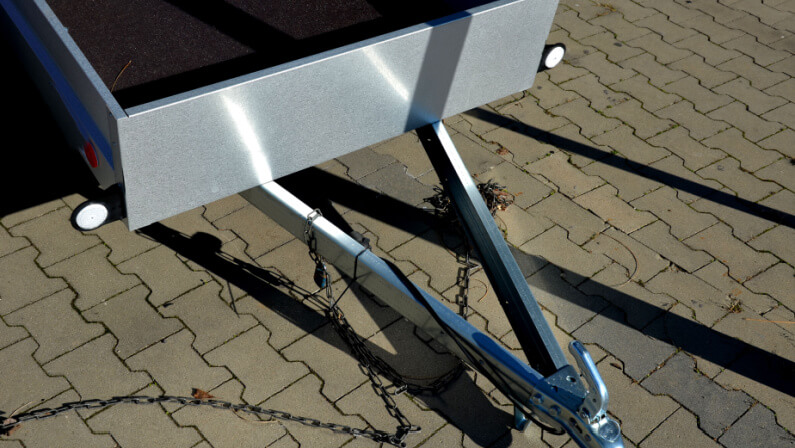
What Factors Influence Trailer Loading?
Before loading your trailer, consider the towing vehicle's capabilities and the nature of your cargo. Each factor plays a pivotal role in how you approach loading your trailer.
Understanding the Towing Vehicle's Specifications
To start, you've got to know your vehicle. The kind of car or truck you're driving sets the ground rules for loading your trailer.
Towing Capacity
Your vehicle's towing capacity is its maximum pulling power, determined by the manufacturer based on the engine size, brakes, transmission, and other factors. It's the ceiling of what you can safely tow, and it's important to respect this limit to avoid putting too much strain on your vehicle. Overloading can lead to a multitude of problems, like brake failure or even losing control while driving.
Hitch Types
The hitch is the crucial connection between your vehicle and the trailer. There are several types of hitches, from the common ball hitch for light loads to more complex systems like weight-distribution hitches for heavier towing. Selecting the appropriate hitch is essential for creating a stable and secure connection, preventing the trailer from detaching, and ensuring the safety of your towing setup.
Cargo Considerations
Once you've matched your vehicle to the trailer, it's time to consider the cargo itself. The way you load can affect your drive just as much as a mechanical issue.
Size and Shape of the Load
Bulky, uneven items need a strategic approach. You want to place them in a way that balances the trailer. Ideally, you'll position these items so that they don't stick out awkwardly, cause drag, or make the trailer tip. The best spot is low and centered between the wheels, or just slightly ahead, to maintain a balanced weight distribution. This helps keep the trailer stable, reducing sway and making it easier to handle the vehicle.
Securing Loose Items
It's not just about where things go, but it's also how they stay there. Unsecured cargo is a hazard—it can shift, causing imbalance, or even fall out on the road. Straps, ropes, and cargo nets are your friends here. They keep everything in its place, so turns and stops don't become dangerous. Plus, securing your load protects it from damage, so when you arrive, everything is just as you packed it.
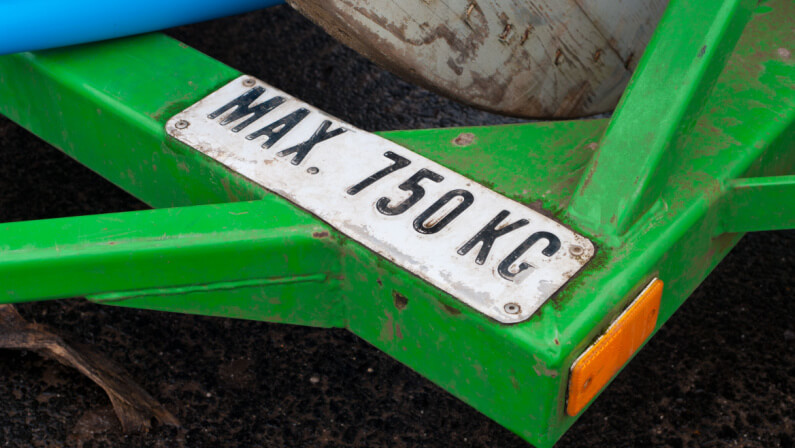
How to Determine the Proper Weight Distribution?
Achieving proper weight distribution is critical when loading a trailer, as it impacts the stability and handling of your towing setup. Optimal distribution helps prevent trailer sway, ensuring that the tow vehicle maintains good traction and making your driving experience safer and more comfortable.
Calculating the center of gravity
Calculating the center of gravity is fundamental in this process. The goal is to place the heaviest part of your cargo slightly forward of the trailer's axle(s). By doing so, you're ensuring that the tongue weight—the weight that presses down on the hitch—is appropriate, typically between 10-15% of the total trailer weight. This is especially important for maintaining control of the tow vehicle. If the center of gravity is too far back, it can lift the rear of the tow vehicle, reducing rear tire traction and potentially causing loss of control.
Utilizing a trailer loading checklist
To assist with this, utilizing a trailer loading checklist can be invaluable. This checklist serves as a reminder to:
Weight distribution guidelines
Follow the manufacturer’s guidelines for your specific trailer type, which will advise on the ideal weight distribution. For most trailers, the recommended guideline is to aim for that 60/40 split with the heavier load towards the front.
Balance and stability checks
Before hitting the road, perform a series of checks to confirm that the load is balanced from side to side and secured in place to prevent any movement. Check the trailer's stability by pushing down on each corner. It should feel firm and not wobble. Ensure that the trailer doesn't tilt to one side, as this could indicate uneven weight distribution.
Remember, the time invested in determining the proper weight distribution before you travel is invaluable for your safety and can significantly reduce the risk of accidents or damage to your cargo.
Step-by-Step Guide to Loading a Trailer
Loading a trailer is a methodical process, and properly loading a trailer is essential for safe and efficient transport.
Here’s a detailed guide to help you ensure that your trailer is loaded correctly:
Step 1: Park your trailer on a level surface. Begin by finding a flat area to park your trailer. This prevents it from rolling and provides an accurate assessment for loading.
Step 2: Chock the wheels. Place chocks in front of and behind the trailer wheels to secure it in place, reducing the risk of movement as you load.
Step 3: Make sure the weight is distributed 60/40. Plan your load so that approximately 60% of the weight is ahead of the axles to prevent sway.
Step 4: Load the heaviest items first. Position the heaviest parts of your cargo just in front of the trailer's axle where it's most stable.
Step 5: Tie down large items with straps. Secure all heavy items with straps to the trailer's built-in anchors to prevent shifting.
Step 6: Place lightweight cargo on top. Once your heavy items are in place and secured, you can then load and secure lighter items on top.
Step 7: Hitch up and test your trailer lights. After loading, connect your trailer to the towing vehicle and check that all lights and signals are working properly for safe driving.
Common Mistakes to Avoid When Loading a Trailer
Loading a trailer may seem straightforward, but common pitfalls can lead to trouble on the road. Avoiding these mistakes is key to ensuring your load is safe and compliant with the law.
Before diving into loading techniques, it's crucial to understand the legal requirements for towing. Improper trailer use can lead to a traffic law offence, which may result in fines or license penalties.
Always ensure you're familiar with local regulations regarding trailer weight limits, lighting requirements, and proper securing of loads to avoid any legal issues while on the road.
Overloading the Trailer
It can be tempting to fit as much as possible onto your trailer, but overloading is a risk you don't want to take. It puts a strain on your vehicle's brakes and transmission and can lead to tire blowouts or suspension failure. Always stick to the weight limits specified by your trailer's manufacturer.
Uneven Weight Distribution
Properly balancing your trailer's load is crucial. An unevenly loaded trailer can sway or tip, and if too much weight is placed at the back, it can lift the towing vehicle's rear, reducing traction and making steering and braking difficult. Ensure weight is distributed evenly with the right bias towards the front.
Inadequate Securing of the Load
Once your cargo is on the trailer, securing it is just as important as how it's placed. Cargo that isn’t properly tied down can shift during transit, causing imbalance or even becoming a road hazard if it falls off. Use straps, ropes, or nets to keep everything in place.
Ignoring Legal Regulations
There are legal regulations for a reason—to keep everyone safe. This includes weight limits, how loads should be secured, and what you're allowed to transport. Failing to adhere to these rules can result in fines, points on your license, or worse, accidents. Make sure you're up to speed with the legal requirements for trailer loading in your area.
Tips for Safe Trailer Driving
Besides learning how to load weight on a trailer, it is also important to learn how to drive with it safely.
Driving with a loaded trailer is a whole different ball game compared to driving a car alone. It demands more attention, adjustments in driving habits, and a heightened sense of awareness.
Here's how you can ensure a safer journey when you're towing a trailer.
Adjusting Driving Techniques for a Loaded Trailer
With a trailer in tow, your vehicle's handling changes.
Here’s what to keep in mind:
Increase Following Distance: It takes longer to stop with a trailer, so give yourself and the drivers ahead plenty of room.
Slow Down: Higher speeds make controlling a trailer more difficult, so ease off the gas and don't rush.
Wide Turns: Trailers cut corners tighter than your vehicle, so swing wider on turns to avoid hopping curbs or hitting objects.
Hill Handling: Approach hills with more power and descend slowly, using engine braking when possible to take the strain off your brakes.
Monitoring the Trailer During Travel
Keep a watchful eye on your trailer as you travel:
Regular Mirror Checks: Use your mirrors to keep an eye on the trailer and ensure it's tracking properly.
Listen for Unusual Noises: Any strange sounds could indicate a problem with the load or trailer.
Vibration Feedback: Be alert to changes in how the vehicle feels, which can signal load shifting or equipment loosening.
Emergency Preparedness and Troubleshooting
Be prepared for the unexpected:
Know Your Route: Be aware of gas stations, rest areas, and repair shops along your path.
Emergency Kit: Keep a well-stocked emergency kit in your vehicle, including tools, spare parts, and safety gear.
Troubleshooting Knowledge: Familiarize yourself with common trailer issues and how to handle them. Know how to change a tire, reset a tripped breaker, or secure a loose connection.
Safe trailer driving is about preparation, patience, and practice. By modifying your driving habits and staying vigilant, you'll keep the roads safe for yourself and others.
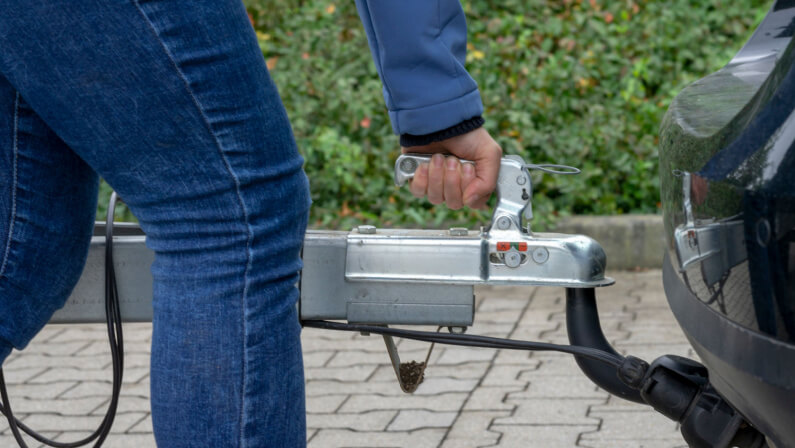
Maintenance and Inspection After Loading
Once you’ve loaded your trailer, whether it's for a short jaunt or a cross-country haul, the work isn't over. To keep everything running smoothly, maintenance and inspection after loading are just as crucial as the loading process itself.
Regular Inspection Routines
Regular inspections are your first defense against potential issues. After loading and at various points during your journey, take the time to:
Inspect Tires: Check for proper inflation, signs of wear, and any damage to ensure they can handle the load.
Check Lights and Signals: Confirm that brake lights, turn signals, and clearance lights are operational.
Verify Hitch Connection: Make sure the hitch is secure and the safety chains are properly attached.
Look Over Braking Systems: If your trailer has its own brakes, ensure they are functioning correctly before setting off.
Addressing Wear and Tear on the Trailer and Towing Vehicle
Wear and tear can compromise the safety and functionality of both your trailer and towing vehicle.
Pay attention to:
Suspension Components: These can wear out under heavy loads, so check for any unusual sagging or weakness.
Brake Pads and Rotors: Towing puts extra strain on brakes, so check for wear more frequently than you would with a vehicle not used for towing.
Engine and Transmission: Monitor your vehicle’s performance; towing can accelerate wear on these critical components.
Rechecking Load Security During Longer Journeys
On longer trips, the vibration from the road can cause cargo to shift or securing equipment to loosen.
Make it a habit to:
Stop and Check: Periodically pull over in a safe location to check the load. Ensure that everything is still firmly in place and that tie-downs have not loosened.
Adjust as Needed: If you notice a shift, rebalance and secure the load as necessary to prevent any hazards.
How to Load a Single-Axle Utility Trailer
These trailers have just one axle, which means there’s only one point where the weight is fully supported. To get this right, you should:
Center the Weight: Aim to place the bulk of your load directly over the axle. This balances the trailer and helps prevent it from tipping or swaying.
Check the Capacity: Be aware of the maximum weight your trailer is designed to carry. Staying within this limit is crucial for the safety of your tow vehicle, trailer, and other road users.
Secure Your Load: Even weight distribution won't matter if your items aren't secured. Use straps and tie-downs to keep everything in place, especially if you're driving on bumpy roads or at higher speeds.
How to Load a Double-Axle Trailer
Double-axle trailers offer more stability and can handle heavier loads, but they still need to be loaded carefully. Here's how to do it:
Spread Out the Weight: Distribute the cargo's weight evenly between the front and back of the trailer, which lays across both axles. This prevents one axle from bearing too much load and potentially failing.
Low and Even: Keep heavier items low to the floor and centered between the left and right sides of the trailer. This lowers the center of gravity and reduces the risk of the trailer tipping.
Regular Checks: On long trips, stop periodically to check that the load hasn't shifted and that all securing equipment is still tightly fastened.
FAQs
When it comes to loading a trailer, it's crucial to get this right, as the safety of your load and your journey depends on it.
Let's address some of the most common queries:
When loading a trailer, where should you put the weight?
The placement of weight on a trailer is paramount for maintaining stability on the road. The bulk of the weight should be positioned in front of the trailer's axle, centered and low to the ground. Ideally, aim for 60% of the cargo weight to be loaded in the front half of the trailer, and the remaining 40% towards the back. This forward weight bias helps keep the trailer aligned with the towing vehicle and reduces the likelihood of sway.
Where should the weight be on a trailer?
In addition to having most of the weight in the front half, it's also important that the weight is evenly distributed from side to side to prevent tilting, which can cause uneven tire wear and potential control issues. The heaviest items should be placed on the floor of the trailer, directly over the axles, to maintain a low center of gravity and ensure stability. Always secure the weight so it won't shift during transport, as even a well-distributed load can become unstable if it moves while you're driving.
Navigating Your Next Move with Confidence: Trailer Loading Mastery
No matter the trailer, remember these golden rules: spread out the weight evenly, make sure everything is tied down tight, and always stay within the weight limit. Stick to these, and you’ll be set for a smooth ride.
Loading a trailer properly is a skill that enhances safety and efficiency. By following these guidelines and utilizing the quality trailers from Norstar, available across different locations, you're set for a successful transport.
For personalized advice on the best trailer for your needs, visit Norstar’s build and quote page, find a local dealer through our dealer locator, or reach out via our contact page. Load with confidence, drive with peace, and reach out to Norstar Trailers for trailers that help you move the world.




